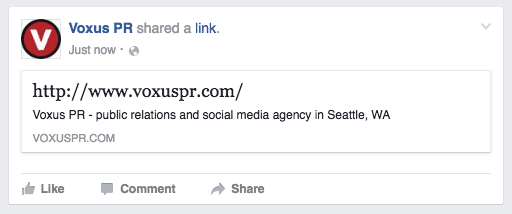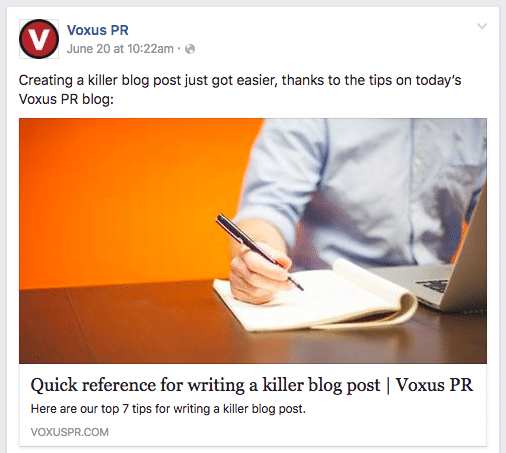Last April, Facebook revealed that it would be removing the ability for users to edit link previews for pages – that includes images, texts and sub-headings. You might not know this if you aren’t already a Facebook page manager (or a page manager for Linkedin – the platform has the same functionality), but Facebook page managers have the ability to edit the images, text and subheadings within a link preview in a post. This functionality has been in existence almost as long as brand pages, so when it was announced that it was being revoked, there was a collective shock wave in the community. The function has been wildly helpful in enabling social media managers to create polished, professional and authentic looking links for their followers. The problem is, hackers and fake news producers discovered this feature, too.
If you’re a visual person, this functionality allows you to turn something like this:

Into something like this:

The latter is much better, right?
Before you freak out, I’d like to clarify why Facebook made this move, in hopes that it might lessen the blow. It turns out that in addition to well-intentioned brand managers, hackers and fake news creators manipulated the way their site content looked on Facebook to click bait more users to their websites. Have you ever clicked on a Facebook post thinking it was a video, only to be taken to another page with no video in sight? You can thank this link preview editing feature and hackers. So, while it may be a blow to your program, I hope you find some consolation in the fact that that Facebook is taking the initiative to combat the plague now known as fake news.
Even though this is a huge shakeup for many, I encourage you not to worry. All is not lost! We previously covered ways to modify your website so you wouldn’t have to worry about using preview editors. By employing your dev team or a code-savvy web developer, you can make links posted from your website look nice on social media platforms no matter who is sharing them (your brand page or one of your customers).
To do this, you’ll need to edit your website or web page’s code to accommodate Facebook’s open graph schema. All the information, and links to how to do this for Facebook, LinkedIn, Twitter, Pinterest, and Google+, can be found in our original post. And at the end of the day, it means your website is optimized to translate well on social media, and you don’t have to edit any more link previews for Facebook!.Win/win!

